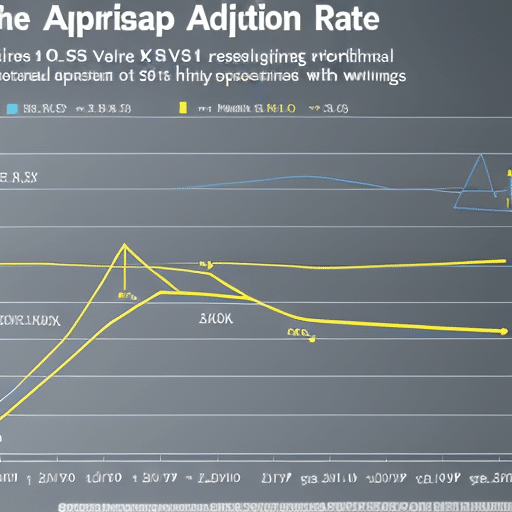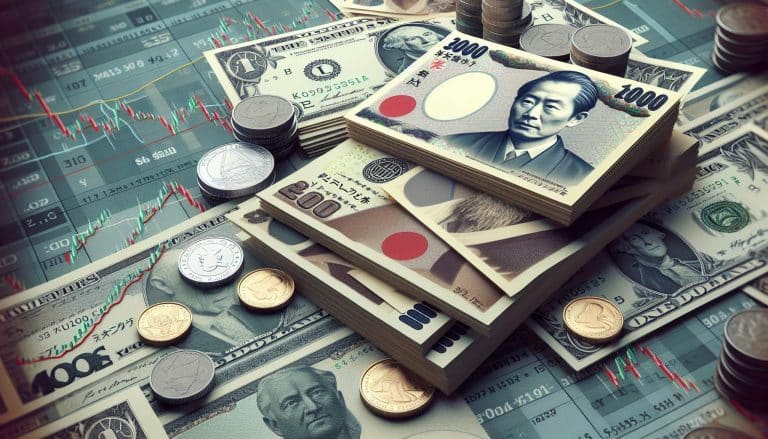Xrp Value Analysis
Ripple’s XRP is a digital asset that has consistently ranked among the top three cryptocurrencies in terms of market capitalization. XRP has been lauded for its potential to revolutionize payments and banking, but it also carries a certain amount of risk due to its highly volatile nature. This article will analyze the value of XRP from both fundamental and technical perspectives, exploring the factors influencing its price, as well as providing investment strategies for those looking to invest in this cryptocurrency. We will also provide an overview of XRP’s performance relative to other leading digital assets on the crypto market and discuss how it interacts with traditional financial markets. Finally, we will make some predictions about where we see XRP heading in the future.
Overview of XRP
XRP, a digital asset developed by Ripple Labs Inc., is a real-time gross settlement system (RTGS) that facilitates fast and secure monetary transactions. XRP’s decentralized nature and open source platform provide several benefits to users such as low transaction fees and faster transaction speeds compared to other traditional payment systems. As more organizations adopt the technology, there has been an increase in demand for XRP leading to an appreciation in its value. Additionally, industry observers are optimistic about the future of XRP and suggest that its adoption will continue to grow due to its scalability and efficient use of resources. These trends indicate that XRP can potentially become one of the most popular cryptocurrencies in the world. With this in mind, it is important to look at past performance of XRP so as to better understand the factors affecting its value over time.
Historical Price Analysis
Examining Ripple’s historical price trends reveals insights into the digital currency’s past performance. The price of XRP has been greatly influenced by supply and demand, as well as regulatory uncertainty in the cryptocurrency space. Additionally, there have been several other factors that have had an impact on its value:
- It was launched in 2012 at a very low price, making it more accessible to investors looking for cheap investments.
- The introduction of new technologies such as blockchain and distributed ledger technology (DLT) have increased the demand for XRP tokens among traders and investors alike.
- Transactions fees associated with XRP transactions are much lower than those associated with other cryptocurrencies, further increasing its appeal as a currency option for users who want to send payments quickly and cheaply without having to worry about high transaction costs.
- There have also been some periods of market volatility which caused a decrease in its value due to trading speculation or regulation uncertainty surrounding cryptocurrency markets in general.
As such, understanding Ripple’s historical price trends can provide valuable insight into its potential risks and rewards for investors interested in investing in this digital asset.
Risks and rewards of investing in XRP
Investing in Ripple’s native cryptocurrency, XRP, can present both risks and rewards for investors. The relationship between supply and demand is the most basic factor influencing its value, as with any other asset or currency. When demand outstrips supply, prices may rise; when there is an oversupply of XRP tokens on the market, its price may fall. Market sentiment is also a key determinant of XRP’s value since it affects buyers’ and sellers’ confidence in the asset. Positive news about potential partnerships or new services built on top of the network could result in increased investor optimism and higher prices; conversely, negative news could lead to falling values as investors become more cautious. Thus, understanding these two factors—supply/demand dynamics and market sentiment—is essential for predicting XRP’s performance in the short-term and long-term. To better understand how these factors influence XRP’s value further, it is important to consider various other external factors that have an impact on its price.
Factors Influencing XRP’s Value
The fluctuations of XRP’s value are greatly influenced by a variety of external factors. These include supply dynamics, such as the overall amount of XRP available on the market and how it is distributed, as well as news coverage. Changes in public sentiment towards the cryptocurrency can lead to significant shifts in its value due to investors buying or selling off their holdings. Moreover, government regulations and policies that affect the cryptocurrency industry have been known to cause large swings in XRP’s price. As such, understanding these various influences on XRP’s value is essential for making informed investment decisions. With this knowledge in hand, one can then move onto exploring the different investment strategies available for investing in XRP.
Investment Strategies for XRP
Exploring various investment strategies for XRP can be likened to navigating a minefield, with the potential for significant gains or losses. The most important factor is having a long-term outlook, as short-term fluctuations in value can cause panic selling and could result in substantial losses. To this end, there are two main approaches investors should consider:
-
Fundamental Analysis: This involves researching the underlying technology of XRP and assessing its growth potential over time. This requires careful research into the factors influencing XRP’s value such as transaction speeds and associated costs.
-
Technical Analysis: This involves evaluating past market trends to identify patterns that might indicate future price movements. By recognizing these patterns, investors can adjust their strategies accordingly to capitalize on any emerging opportunities or minimize risks from declines in value.
The success of an investment strategy depends on how well it is tailored to individual investor goals and risk appetite. With the right approach, investing in XRP could lead to attractive returns. In order to take advantage of these possibilities, however, investors must understand which exchanges and platforms are available for trading XRP and ensure they have sufficient funds before entering into any positions.
Exchanges and Platforms for XRP Trading
Considering various exchange and platform options can be essential for traders looking to invest in XRP. As the cryptocurrency market is highly unpredictable, it is important to understand how different exchanges and platforms may affect XRP trading. For instance, some exchanges have more reliable liquidity than others, meaning that a trader can expect greater success with certain platforms compared to others. Additionally, currency regulations must be taken into consideration when exploring exchange and platform options; many countries impose restrictions on cryptocurrencies so it’s important for investors to be aware of these limitations before engaging in any type of trading activity. By familiarizing themselves with available exchange and platform options as well as understanding the unique benefits each offer, traders can make informed decisions about their investments. In order to do this effectively, they should research current market trends as well as relevant currency regulations. With this information at hand, investors can better position themselves for success when investing in XRP. These insights will help them anticipate future changes in pricing so they are prepared when making their next move on the market. With an up-to-date understanding of relevant exchange and platform options combined with knowledge of current market conditions and applicable laws, traders will be primed to capitalize on price fluctuations that arise from unexpected developments surrounding XRP prices.
XRP Price Predictions
Gleaning insights on XRP prices requires an examination of current market conditions and relevant regulations to anticipate future trends. The main factors that should be considered are:
- Technical indicators, such as moving averages, resistance levels, and support levels
- Regulations impacting the cryptocurrency market
- Political stability in countries where the majority of trading is conducted
- News from major players in the industry that have a significant impact on XRP’s price movements
- Demand for XRP from investors and traders globally
These factors play a crucial role in determining the direction of XRP price movements. By understanding their influence, traders can identify opportunities for potential profits or losses. With this knowledge, they can make informed decisions about investing in XRP or other cryptocurrencies. As such, it is important to remain alert to any changes in these markets so as to capitalize on any new developments. Moving forward, this will help investors stay ahead of the curve when it comes to predicting future XRP price movements.
XRP and the Cryptocurrency Market
XRP, as with many other cryptocurrencies, is subject to the ebbs and flows of the broader cryptocurrency market. It is important to understand that XRP’s value is derived from its utility as a currency within the crypto-space, as well as its ability to be exchanged for other currencies, including traditional ones. As such, it is impacted by changes in both the availability of mining opportunities, and blockchain technology advancements. Mining refers to a process by which new units of a particular currency are generated – typically requiring significant amounts of computing power – while blockchain technology can be thought of as an underlying digital infrastructure that allows secure and reliable transfer of those funds between two parties. These two factors thus have a direct bearing on XRP’s performance when compared against other crypto assets. By understanding how these two elements interact with one another in order to affect XRP’s value, investors will be better equipped when making decisions regarding their investments in this cryptocurrency. This understanding has further implications when looking at how XRP interacts with traditional financial markets; something which will be discussed in more detail shortly.
XRP and the Traditional Financial Market
Analyzing the interplay between XRP and traditional financial markets is essential to understanding the potential of this cryptocurrency. To that end, XRP serves as a bridge between crypto banking and traditional finance, opening up an array of Decentralized Finance (DeFi) opportunities. Some of these include:
- Instantaneous settlement for global payments
- Remittance transfers with low transaction fees
- Access to liquidity on various digital asset exchanges
- Providing a hedging tool against volatility in traditional markets
- Enabling greater access to financial services in developing countries.
The above features make XRP a powerful force in both the cryptocurrency and traditional financial markets, providing users with more options when it comes to global money transfers. As we come to understand how XRP can contribute to both industries, it’s important to consider its current value and potential for growth moving forward. With this knowledge, investors can decide whether or not they should invest in XRP as part of their portfolio. This leads us into our closing thoughts on the topic of XRP value analysis.
Closing Thoughts
Considering the potential of XRP to revolutionize both traditional and crypto finance, it is essential for investors to carefully consider all aspects of the asset before investing their capital. XRP has seen significant adoption in the past few years, as more institutions are starting to recognize its potential. However, scalability concerns still remain a major issue that must be addressed before widespread adoption can occur. This is especially true since blockchain-based systems currently struggle with throughputs needed for large-scale financial applications. Despite this challenge, many believe that XRP could still become a viable option for conducting global payments due to its speed and low cost compared to existing solutions.
Overall, XRP presents an interesting investment opportunity that has yet to be fully realized. As more organizations continue to explore the technology’s capabilities and address any scalability issues, there is potential for increased adoption and an increase in value of the asset over time. It remains important for investors to pay close attention to current developments when considering investing in XRP so they can make informed decisions about their investments.
Frequently Asked Questions
How can I buy XRP with fiat currency?
Ripple’s XRP is available for purchase on a variety of exchanges using fiat currencies. Research should be conducted to determine which exchange offers the best rate and most secure environment to buy XRP with the desired currency.
What are the tax implications of owning XRP?
Owning XRP may be subject to tax liabilities due to holding limits and capital gains. Therefore, one should consider the tax implications when deciding whether or not to invest in this cryptocurrency.
What is the maximum amount of XRP I can purchase?
The maximum amount of XRP an individual can purchase is not set, as the supply of XRP is not finite. Instead, new XRP tokens are introduced through mining and staking rewards. Therefore, it depends on how much one wishes to invest in acquiring more tokens.
Are there other coins similar to XRP?
Exploring alternative coins to XRP reveals similar digital wallet technology, with Ripple technology as a major component. Comparable currencies include Litecoin, Ethereum and Dash; all offering various benefits in terms of security, speed and efficiency. Analyzing the features of each provides insight into their potential use cases for investors.
Is XRP a good long-term investment?
XRP has been subject to trading strategies, scalability issues, and other risks that should be considered when determining whether it is a good long-term investment. Analysis of these factors may help determine its potential as a viable asset class in the future.





 Bitcoin
Bitcoin  Ethereum
Ethereum  Tether
Tether  XRP
XRP  USDC
USDC  Solana
Solana  TRON
TRON  Lido Staked Ether
Lido Staked Ether  Dogecoin
Dogecoin  Figure Heloc
Figure Heloc  Cardano
Cardano  Bitcoin Cash
Bitcoin Cash  WhiteBIT Coin
WhiteBIT Coin  Wrapped stETH
Wrapped stETH  Wrapped Bitcoin
Wrapped Bitcoin  USDS
USDS  Wrapped eETH
Wrapped eETH  Binance Bridged USDT (BNB Smart Chain)
Binance Bridged USDT (BNB Smart Chain)  Chainlink
Chainlink  Zcash
Zcash  Monero
Monero  LEO Token
LEO Token  WETH
WETH  Stellar
Stellar  Coinbase Wrapped BTC
Coinbase Wrapped BTC  Ethena USDe
Ethena USDe  Hyperliquid
Hyperliquid  Litecoin
Litecoin  Avalanche
Avalanche  Sui
Sui  Hedera
Hedera  sUSDS
sUSDS  Uniswap
Uniswap  Shiba Inu
Shiba Inu  Dai
Dai  USDT0
USDT0  Canton
Canton  Toncoin
Toncoin  World Liberty Financial
World Liberty Financial  PayPal USD
PayPal USD  Cronos
Cronos  Ethena Staked USDe
Ethena Staked USDe  Mantle
Mantle  USD1
USD1  Polkadot
Polkadot  Rain
Rain  MemeCore
MemeCore  Bitget Token
Bitget Token